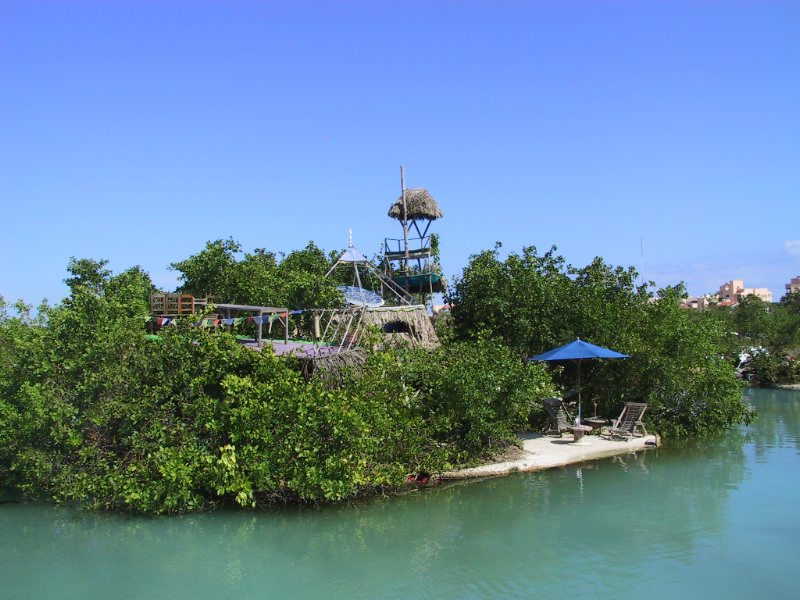SPIRAL ISLANDS / ISLA MUJERES
- Ayrıntılar
- Kategori: Habitat World
 General Information about Spiral Island
General Information about Spiral Island
Spiral Island is the name given to two world famous floating artificial islands built by British expatriate and eco-pioneer Richart "Rishi" Sowa.
Sowa, a musician, artist, and carpenter started constructing the original Spiral Island in 1998 in the Maya Riveria of Mexico. The first Spiral island was located in a lagoon near Puerto Aventuras, on the Caribbean coast of Mexico south of Cancún. Rishi began filling nets with empty discarded plastic bottles to support a structure of plywood and bamboo, on which he poured sand and planted numerous plants, including mangroves. The floating bottle island sported a two-story palapa structure, a solar oven, a self-composting toilet, and three beaches. Some 250,000 bottles were used to construct the 66 feet (20 m) by 54 feet (16 m) floating island structure. Rishi planted mangroves to help keep the island cool, and some of the mangroves rose up to 15 feet (4.6 m) high.









